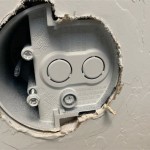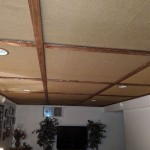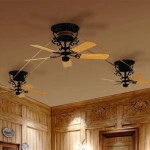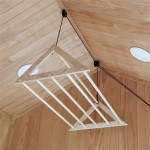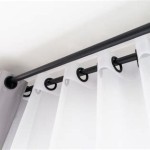Getting The Most Out Of Your Garage Ceiling Fans
Garage ceiling fans often represent an overlooked element in maintaining a comfortable and functional workspace. While frequently associated with interior living spaces, their application within a garage environment presents unique opportunities for improving air circulation, temperature regulation, and overall air quality. Understanding the proper selection, installation, and utilization of garage ceiling fans can significantly enhance the usability and comfort of this often-neglected area of the home.
The garage environment typically experiences a wide range of temperature fluctuations. In the summer, accumulated heat from vehicles and direct sunlight can make the space unbearably hot. Conversely, winter conditions often lead to frigid temperatures, hindering various tasks and potentially damaging stored items. Effective air circulation, provided by a properly selected ceiling fan, can mitigate these temperature extremes and create a more tolerable working environment. Furthermore, circulating air helps to prevent the buildup of moisture, which can lead to rust, mold, and mildew formation on tools, equipment, and stored materials.
Beyond temperature and humidity control, garage ceiling fans contribute to improved air quality. Garages commonly serve as spaces for vehicle maintenance, woodworking, painting, and other activities that generate airborne particles. These particles, ranging from sawdust and paint fumes to exhaust gases, can pose health risks if allowed to accumulate. A ceiling fan effectively disperses these contaminants, promoting better ventilation and reducing the concentration of harmful substances in the air. This is particularly important for individuals who spend extended periods working within the garage.
Selecting the Right Garage Ceiling Fan
Choosing the appropriate ceiling fan for a garage involves careful consideration of several factors. These include the size of the garage, the ceiling height, the prevailing climate, and the intended use of the space. A fan that is too small will prove ineffective in circulating air throughout the garage, while an oversized fan may be unnecessarily powerful and potentially disruptive. Ceiling height dictates the length of the downrod required to position the fan blades at an optimal distance from the floor. Climate considerations influence the need for features such as reversible motors for seasonal adjustments and weather-resistant construction for humid environments.
Garage size directly impacts the required blade span of the ceiling fan. As a general guideline, garages up to 100 square feet require a fan with a blade span of 42 inches or less. For garages between 100 and 300 square feet, a 52-inch fan is typically adequate. Larger garages, exceeding 300 square feet, may necessitate a fan with a blade span of 56 inches or greater, or the installation of multiple fans to ensure comprehensive air circulation. Consult fan manufacturers' specifications and recommendations to determine the optimal blade span for specific garage dimensions. Consider that higher CFM (cubic feet per minute) ratings indicate greater airflow efficiency.
Ceiling height is a critical factor in determining the appropriate downrod length. In garages with standard ceiling heights of 8 to 9 feet, a flush-mount or near-flush-mount fan may suffice. However, for higher ceilings, a downrod is necessary to lower the fan blades to a suitable distance from the floor, typically between 7 and 9 feet. Insufficient downrod length can result in inadequate air circulation, while excessive length may pose a safety hazard. Measure the ceiling height accurately and select a downrod that positions the fan blades at the recommended height. If the ceiling is sloped, a special angled downrod adapter may be required for proper installation and operation.
The garage's climate significantly influences the choice of ceiling fan materials and features. In humid environments, opt for fans with corrosion-resistant components, such as aluminum blades and stainless steel hardware. These materials withstand moisture exposure without deteriorating or developing rust. Consider fans with wet or damp ratings, indicating their suitability for use in areas prone to moisture. Furthermore, fans with reversible motors are advantageous in climates with distinct seasons. In the summer, the fan should rotate counterclockwise to create a cooling downdraft. In the winter, reversing the fan's direction to clockwise helps circulate warm air that rises to the ceiling, improving heating efficiency.
The intended use of the garage influences the selection of additional fan features. If the garage serves as a workshop, consider a fan with integrated lighting to enhance visibility. Ensure the lighting is adequate for performing detailed tasks. Remote control operation provides convenient control over fan speed and lighting from anywhere in the garage. Some fans offer smart home integration, allowing control via smartphone apps or voice assistants. For garages used primarily for vehicle storage, a basic fan with a durable motor and efficient airflow may be sufficient. Assess the specific needs and requirements of the garage environment to choose a fan with the appropriate features.
Installation and Maintenance
Proper installation and regular maintenance are essential for ensuring the safe and efficient operation of a garage ceiling fan. Installation typically involves mounting the fan to a structurally sound ceiling junction box, wiring the fan to the electrical system, and attaching the blades and other components. Maintenance tasks include periodic cleaning of the fan blades, tightening of screws and hardware, and lubrication of the motor bearings. Neglecting these aspects can lead to performance degradation, safety hazards, and premature fan failure.
Before commencing installation, ensure the ceiling junction box is rated to support the weight of the ceiling fan. Standard ceiling boxes designed for light fixtures may not be adequate for heavier ceiling fans. Replace the existing box with a fan-rated box that is securely mounted to a ceiling joist. Adhere to all applicable electrical codes and regulations during wiring. Disconnect the power to the circuit breaker before handling any electrical connections. Use appropriate wire connectors and ensure all connections are tight and secure. Incorrect wiring can result in electrical shorts, fire hazards, or damage to the fan motor.
After mounting the fan and wiring the connections, carefully attach the fan blades according to the manufacturer's instructions. Ensure the blades are properly balanced to prevent wobbling or excessive vibration. Use a blade balancing kit if necessary to correct any imbalance. Tighten all screws and hardware securely to prevent loosening over time. Regularly inspect the fan for loose screws or worn components. Address any issues promptly to maintain optimal performance and prevent potential safety hazards.
Periodic cleaning is crucial for maintaining the efficiency and longevity of a garage ceiling fan. Dust and debris accumulation on the blades can reduce airflow and strain the motor. Use a soft cloth or vacuum cleaner with a brush attachment to remove dust from the blades, motor housing, and other components. Avoid using harsh chemicals or abrasive cleaners, as these can damage the fan's finish. Clean the fan at least once per season, or more frequently in dusty environments. A clean fan operates more efficiently and extends its lifespan.
Lubrication of the motor bearings is necessary for certain types of ceiling fans. Some fans have sealed bearings that do not require lubrication, while others require periodic oiling. Consult the fan's manual or manufacturer's specifications to determine the appropriate lubrication schedule and type of lubricant to use. Apply a few drops of oil to the oil ports, if present, using a long-necked oil can. Avoid over-lubricating the motor, as this can attract dust and debris. Proper lubrication helps maintain smooth and quiet operation.
Optimizing Fan Usage for Maximum Benefit
To maximize the benefits of a garage ceiling fan, it is essential to optimize its usage based on seasonal changes, activity levels, and specific needs. Utilizing the fan's reversible motor, adjusting fan speed settings, and strategically positioning the fan can significantly enhance its effectiveness in maintaining a comfortable and functional garage environment. Understanding these strategies allows for tailored use of the fan to achieve desired results.
The reversible motor feature on many garage ceiling fans offers a valuable tool for seasonal adjustment. In the summer months, set the fan to rotate counterclockwise. This creates a downdraft that promotes evaporative cooling, making the space feel cooler. The moving air evaporates perspiration from the skin, creating a cooling sensation. In the winter, reverse the fan's direction to clockwise. This creates an updraft that pushes warm air, which naturally rises, back down towards the floor. This helps to distribute heat more evenly throughout the garage, improving heating efficiency and reducing energy consumption.
Adjusting the fan speed settings allows for fine-tuning the airflow to suit specific activities and temperature conditions. High-speed settings provide maximum airflow for rapid cooling and ventilation. These settings are ideal for hot days or during activities that generate significant heat or fumes. Medium-speed settings offer a balance between airflow and noise levels. They are suitable for general use and maintaining a comfortable ambient temperature. Low-speed settings provide gentle air circulation for reducing humidity and preventing stagnant air. These settings are useful during cooler periods or when minimal ventilation is required. Experiment with different speed settings to find the optimal balance for different situations.
Strategic positioning of the ceiling fan can enhance its effectiveness in directing airflow and maximizing its impact. In garages with multiple workstations or distinct areas, consider installing multiple fans to provide targeted air circulation. Position the fan in a central location to ensure even distribution of airflow throughout the space. Avoid obstructions that may impede airflow, such as tall storage containers or equipment. Ensure the fan blades are positioned at an optimal distance from the floor, typically between 7 and 9 feet, to maximize air circulation without creating excessive drafts. Consider the placement of windows and doors to optimize natural ventilation in conjunction with the ceiling fan.
In addition to adjusting fan speed and direction, consider using the fan in conjunction with other ventilation strategies. Opening windows and doors can promote cross-ventilation, allowing fresh air to enter and stale air to exit. This is particularly effective when the outside temperature is cooler than the inside temperature. Exhaust fans can be used to remove localized pollutants, such as welding fumes or paint odors. A combination of ceiling fans, natural ventilation, and exhaust fans provides comprehensive air quality control in the garage environment. Integrating these strategies maximizes the benefits of the ceiling fan and creates a healthier and more comfortable workspace.

7 Best Garage Ceiling Fans 2024 Top Picks Reviewed Advanced Systems

How To For A Ceiling Fan Reviews By Wirecutter

Discover The Game Changing Benefits Of Damp Rated Industrial Ceiling Fans For Your Space Super Duty

Mule Ceiling Mounted Garage Fan The Green Head

How To For A Ceiling Fan Reviews By Wirecutter

How To For A Ceiling Fan Reviews By Wirecutter

Can You Use A Dimmer Switch On Ceiling Fan Heartland Inspections

Should I Drywall My Garage Home Inspection Geeks

Emerson Heat Fan Ceiling 1 Of 2

11 Best Fans To Keep You Cool In 2025
Related Posts


